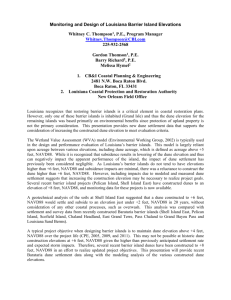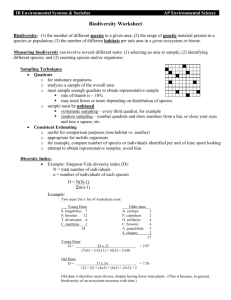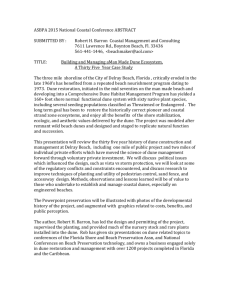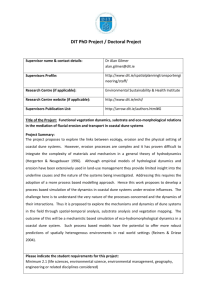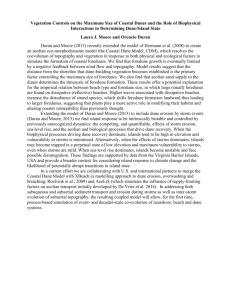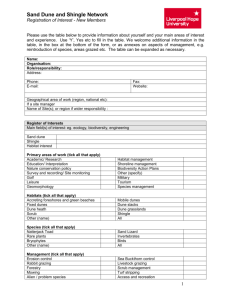Reconsidering Louisiana Island Barrier Island Construction Elevations
advertisement
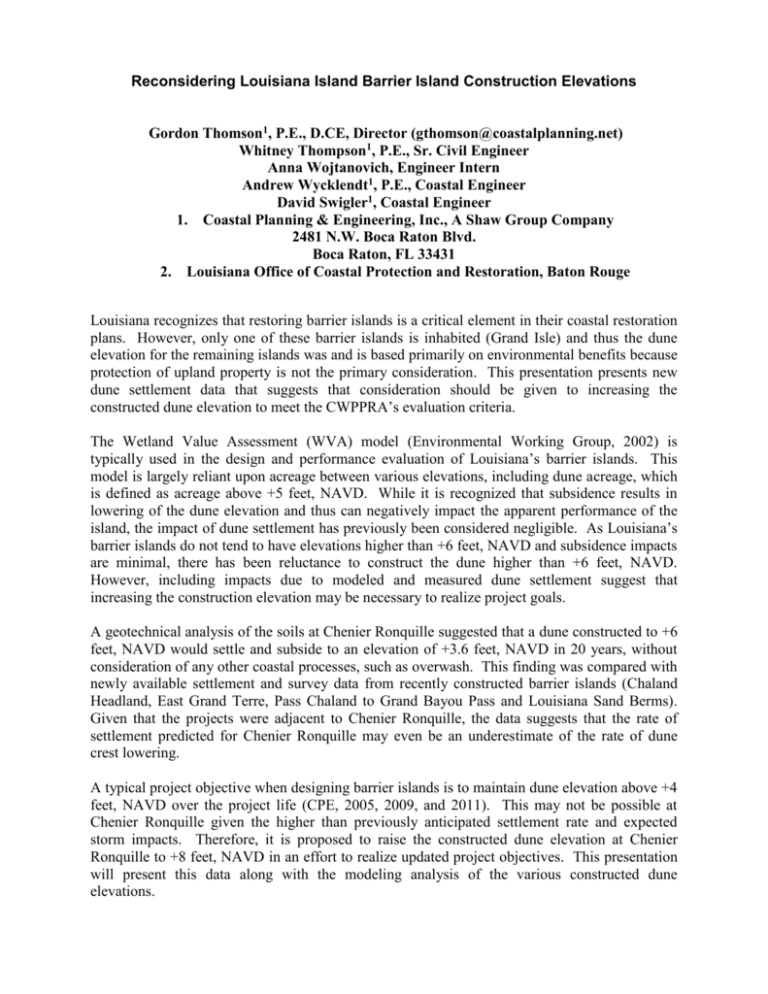
Reconsidering Louisiana Island Barrier Island Construction Elevations Gordon Thomson1, P.E., D.CE, Director (gthomson@coastalplanning.net) Whitney Thompson1, P.E., Sr. Civil Engineer Anna Wojtanovich, Engineer Intern Andrew Wycklendt1, P.E., Coastal Engineer David Swigler1, Coastal Engineer 1. Coastal Planning & Engineering, Inc., A Shaw Group Company 2481 N.W. Boca Raton Blvd. Boca Raton, FL 33431 2. Louisiana Office of Coastal Protection and Restoration, Baton Rouge Louisiana recognizes that restoring barrier islands is a critical element in their coastal restoration plans. However, only one of these barrier islands is inhabited (Grand Isle) and thus the dune elevation for the remaining islands was and is based primarily on environmental benefits because protection of upland property is not the primary consideration. This presentation presents new dune settlement data that suggests that consideration should be given to increasing the constructed dune elevation to meet the CWPPRA’s evaluation criteria. The Wetland Value Assessment (WVA) model (Environmental Working Group, 2002) is typically used in the design and performance evaluation of Louisiana’s barrier islands. This model is largely reliant upon acreage between various elevations, including dune acreage, which is defined as acreage above +5 feet, NAVD. While it is recognized that subsidence results in lowering of the dune elevation and thus can negatively impact the apparent performance of the island, the impact of dune settlement has previously been considered negligible. As Louisiana’s barrier islands do not tend to have elevations higher than +6 feet, NAVD and subsidence impacts are minimal, there has been reluctance to construct the dune higher than +6 feet, NAVD. However, including impacts due to modeled and measured dune settlement suggest that increasing the construction elevation may be necessary to realize project goals. A geotechnical analysis of the soils at Chenier Ronquille suggested that a dune constructed to +6 feet, NAVD would settle and subside to an elevation of +3.6 feet, NAVD in 20 years, without consideration of any other coastal processes, such as overwash. This finding was compared with newly available settlement and survey data from recently constructed barrier islands (Chaland Headland, East Grand Terre, Pass Chaland to Grand Bayou Pass and Louisiana Sand Berms). Given that the projects were adjacent to Chenier Ronquille, the data suggests that the rate of settlement predicted for Chenier Ronquille may even be an underestimate of the rate of dune crest lowering. A typical project objective when designing barrier islands is to maintain dune elevation above +4 feet, NAVD over the project life (CPE, 2005, 2009, and 2011). This may not be possible at Chenier Ronquille given the higher than previously anticipated settlement rate and expected storm impacts. Therefore, it is proposed to raise the constructed dune elevation at Chenier Ronquille to +8 feet, NAVD in an effort to realize updated project objectives. This presentation will present this data along with the modeling analysis of the various constructed dune elevations.
